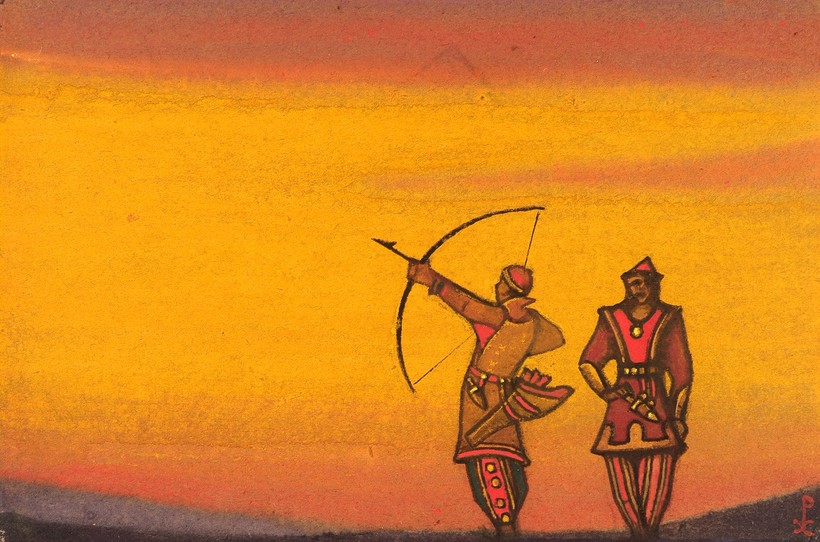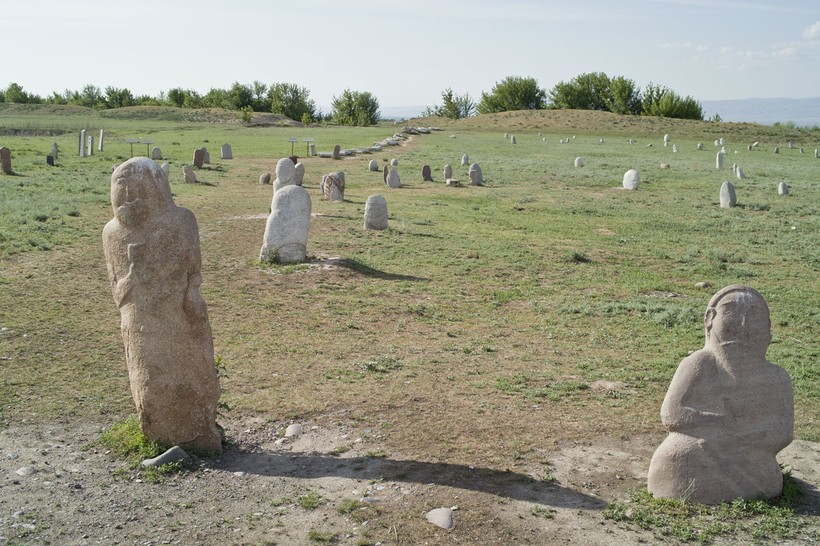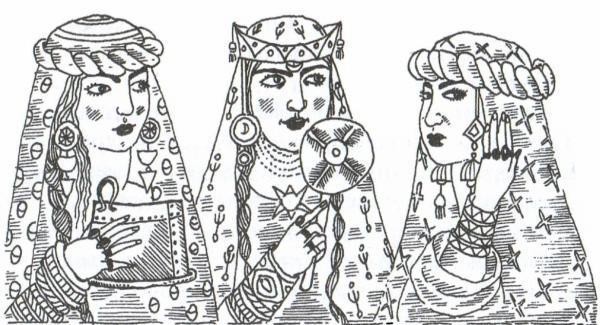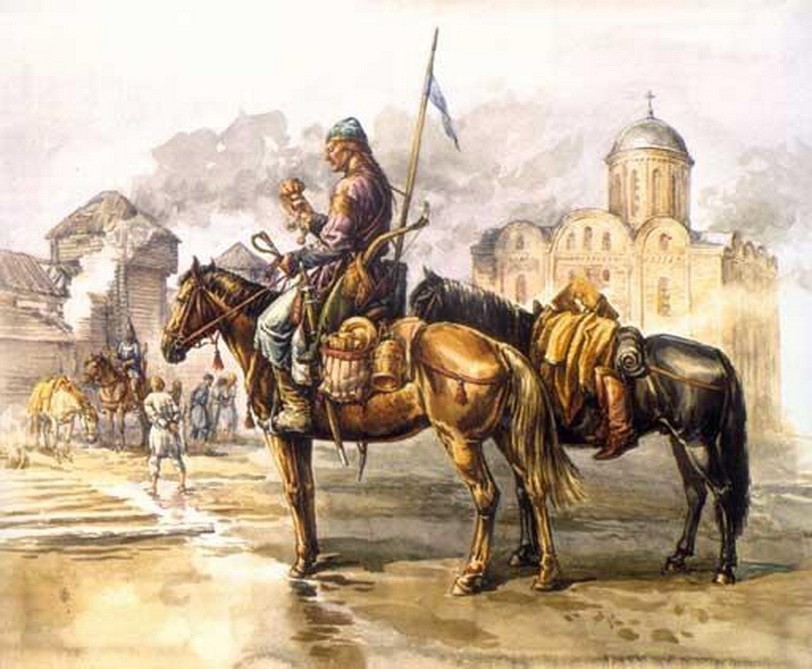The Kipchaks (Polovtsians) are excellent mercenaries
Kypchaks (aka Polovtsians) are Turkic-speaking people, who by conquest were able to occupy the territory of the Pechenegs, reach the Dnieper and the lower Danube.
Name
There are several versions of the origin of the name. It is important to note that the Kipchaks were called not only Polovtsians, but also Kumans (Byzantines). The very word «Kipchaks» a number of historians associate with the field. Supporters of the historian Aristus Kunik believe that the name came from the word «polovy». It denotes a straw color.
If you translate kypchak into Tatar, you get a chariot, and in translation from Old Turkic it means «lucky» (according to another version, «ill-fated»).
History
The ethnos of Kypchaks was formed in the 8th century AD. Under their aegis were Karluk, Kyrgyz and Kimaks. Conquests allowed them to occupy the territory that now belongs to Kazakhstan. From the 9th century the Polovtsians began to advance towards Southern Russia, devastating the lands and capturing people. In the 10th century the Polovtsians were first friendly towards Pereyaslavl, but after a short period of time they made an attempt to seize part of the territory. The attempt is crowned with success, the army, led by Khan Iskal, begins to ravage Pereyaslavl lands. Since the middle and till the end of 11 century Polovtsians make regular attacks on Russian lands.
The reason of regular defeats of Russian soldiers became fragmentation of Russia as such. When the troops began to unite, they were much easier to fight. It has led to a constant succession of successes. The 12th century became fateful for the Polovtsians, they began to be pushed to the Don, and then to the Caucasus. However, in Georgia they were accepted for service, which helped the Georgian king David to get rid of the Seljuks. Kipchak troops played a significant role in internecine strife, helping the Suzdal and Northern princes to fight against the Khvalyn princes.The Kipchaks fought with the Pechenegs on the side of Byzantium, had a serious influence on the Bulgarians under the Second Bulgarian Empire, acting as its ally. They fought on the side of the Alans, opposing the Mongol army. Thus, the Kipchaks formed the image of mercenaries who performed under various banners, helping princes to consolidate their power.
Life

The Kipchaks were good herders, raising sheep, horses, and camels. Their way of life was close to nomadic. Stopping places occurred only in winter and summer periods. The main way of money extraction was robbery and ruin. Contemporaries claim that the Kipchaks managed to loot a lot of gold and silver, which they exchanged for goods they needed. They almost did not build cities, preferring to capture settlements and use them for their own needs.
By capturing territories, the Kipchaks could collect tribute. The Kypchak population was divided mainly into warriors and artisans, and khans, who led a luxurious lifestyle, stood apart. Women were engaged in the whole life, and they were highly valued in the society. It is known that the Kipchaks had widespread blood feuds.
Warfare became a key factor of development in the life of the Kipchaks. The peoples subjugated by them noted their high organization and excellent battle tactics. The main weapons used by the Kipchaks in battle were bows, darts and curved sabers. Warriors carried their quivers closer to their sides so that they could quickly retrieve arrows.
One warrior could have several horses, and the cavalry was the main force of the army. In battle, the Kipchaks threw harnesses on the enemy warriors and stabbed their enemies with spears.
The gradual development of military science led to the appearance of heavy warriors dressed in chain mail. The Kipchaks began to use armor and helmets to protect their bodies. Heavy self-shooters and a special kind of weapon — Greek fire, which was a combustible mixture, became common weapons.
To improve their fighting skills, warriors not only trained but also hunted. Hunting became one of the main occupations of the Kipchaks, helping to obtain food and fur, from which coats were made. Women sewed outfits for warriors from sheep’s wool, which helped to overcome long distances in the cold. Thus, many of the occupations of the Kipchaks were in one way or another connected with warfare.
Religion
The religion of the Kipchaks was Tengrianism. They worshipped the great Tengri, the lord of the sky. Totemism was widespread, in particular the worship of the spirit of the wolf. Like other pagans, the Kipchaks associated themselves with this predator, believing that it could give them strength. Women honored the goddess Umai, associated with harvest and fertility. Religious representatives were shamans, called kam. They conducted divination rites, played the role of healers, and communicated with spirits.
Culture

The main cultural achievement of the Kipchaks were statues of stone women. These figures symbolize ancestors and are a tribute to them. Stone women were placed on high plots in the steppe or at burial mounds. The figures could be not only female but also male. Their faces always turned to the east. In one sanctuary there were several statues. There are several types of Cumans statues:
-men with mustaches and beards;
-armed men;
-women with children;
-women with bowls and cups.
In the 12th century, the Polovtsians began to be regularly ordered to make statues. This allowed stonemasons and sculptors to develop their activity. For some time the statues had amazing detailing, but by the end of the 12th century they had become more primitive. Many were missing faces, however, indicating the emergence of a different method of decoration — the statue’s face was well sanded in order to paint the image.
Dwelling
The Kypchaks called their dwelling «vezha». It was made of cylindrical branches. The walls were woven, the roof had a conical shape and was made of poles. A circle in the center served as a hole for the smoke outlet. Such houses could be put on wagons and transported over long distances. The vezha was easily anchored in the ground, which was necessary for winter parking.
Appearance
Clothing

The nomadic life of the Polovtsians contributed to the creation of clothing, which was necessary for every nomad. Therefore, women’s and men’s costumes did not particularly differ from each other. Kypchaks wore caftans, shirts, pants and boots. Women put emphasis on jewelry, while men tended to get reliable armor. However, some of them were decorated with exquisite ornaments. An obligatory element of the Kipchak costume was a belt.
On it men fastened weapons and crosses, and women carried purses, mirrors and other items. There was a big difference in headdresses. Men’s headdress was a cap, and on the battlefield men wore a helmet. Women, on the other hand, used headdresses that were characterized by diversity. They also tended to decorate skirts, which were worn over the caftan.
Famous people
Among the Kipchaks there are quite a few famous personalities. One of the most illustrious khans was Atrak. His military strength was so great that he was mentioned even in Russian bylinas. Another glorified khan was Tugorkan, who was also honored with a mention in folklore. Russians considered him their worst enemy, and in the bylinas he was called Tugarin and associated with a snake. Khan became famous for his ferocity during battles with the army of Svyatopolk Izyaslavich.
Food
The Kipchaks, like any other nomadic people, ate nourishing food and drank koumiss, which helped them keep their strength during a long journey.
1.The main types of meat were beef, horse meat, mutton and camel meat.
2. Poultry was rarely eaten as they had no opportunity to breed it.
3. The Kipchaks ate a lot of flour, because it was baked goods that helped to gain enough calories.
4. In addition to koumiss, they used cow and goat milk.
5. From soups they used lagman, made sausages, kazy (a kind of sausages).
The traditional cuisine of the Kipchaks had a great influence on the modern Kazakh cuisine. It was the Kipchaks who were among the first to use the koktalnitsa, which is still used for cooking fish dishes.
Kypchaks became famous as glorious mercenaries, they were called the most dangerous enemies of Russia, but they should be given credit. This nation was able to create an army, the equal of which was hard to find. It was the Kipchaks who influenced the development of the peoples of Kazakhstan and Kyrgyzstan. They created sculptures, which even today amaze with the elaboration of details. Their life was based on constant preparation for battle, and for this even in Russian bylinas they were portrayed as strong warriors.
